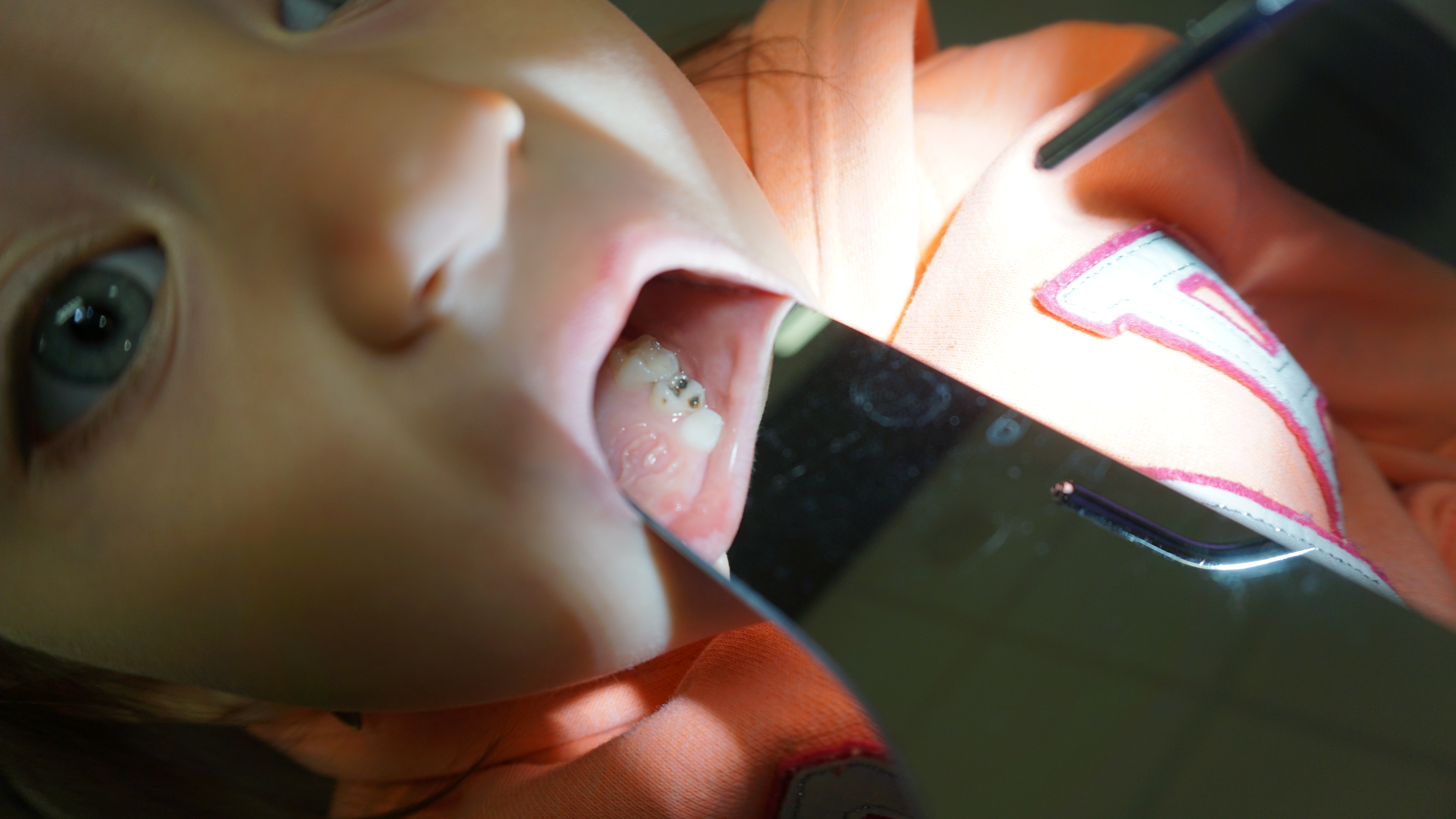
A dental technique dating back more than a century is resurfacing as a possible method to treat dental caries in children and youth.
Silver diamine fluoride (SDF), a non-surgical alternative to dental restoration and fillings, dropped off the dental radar in the 1950s and is now being reevaluated for use in cases where children are too small for fillings.
Use of SDF helps manage dental caries in children and adolescents, including those with special health care needs.
SDF is a liquid fluoride that is painted onto a cavity to prevent further infection. But there's a drawback: it paints the teeth black.
"Although it works in killing the bacteria causing decay, it's not actually fixing the cavity," says dentistry professor Steve Patterson. "The hole is still there."
Still, the technique is gaining popularity in treating children, says Patterson. Especially in kids where a cavity can't be treated or filled right away or as a temporary solution to a tooth that may still eventually fall out.
"Yes, it helps decay from progressing. But SDF has its limits on when and where it can be used," he says. "It's helpful for someone who can't pay for a filling or a young child who would have a tough time going through the process of getting a filling. SDF is an option in places where access to care is limited and for public health clinics. The technique has hype, but it doesn't work all the time or in all places."
Patterson says the biggest limitation of SDF is that it turns teeth black.
"It just doesn't look great," he acknowledges. "A major setback with this form of treatment is that it's not a fluoride application like others that prevent disease from happening. While SDF keeps it from progressing, essentially the concern is still there."